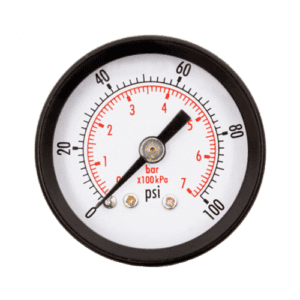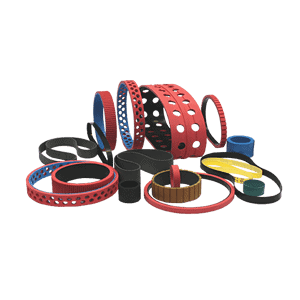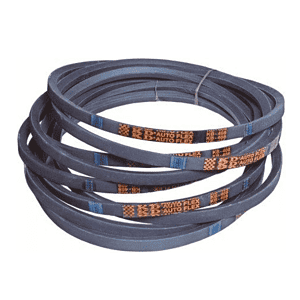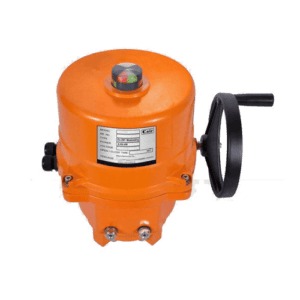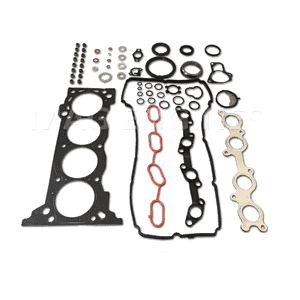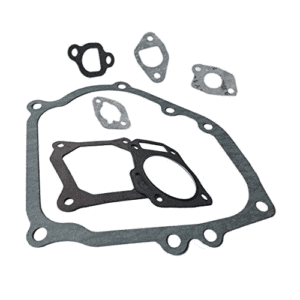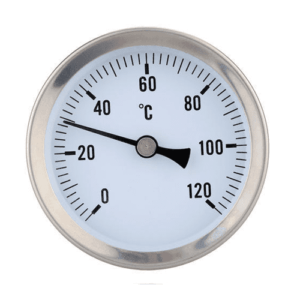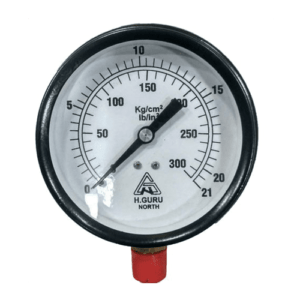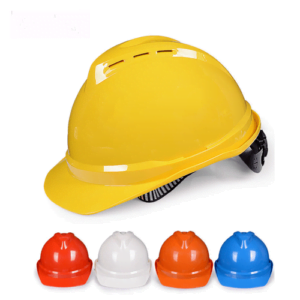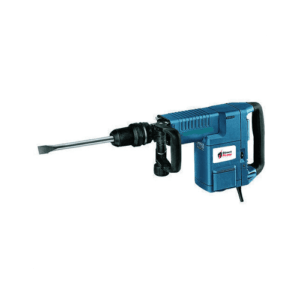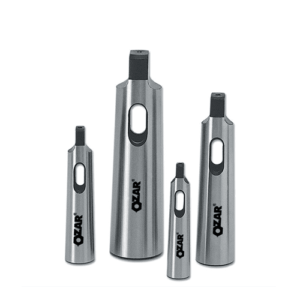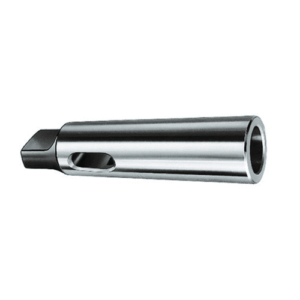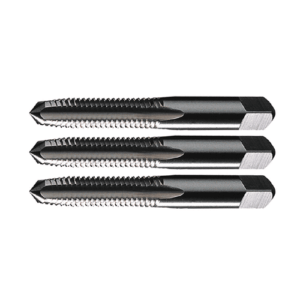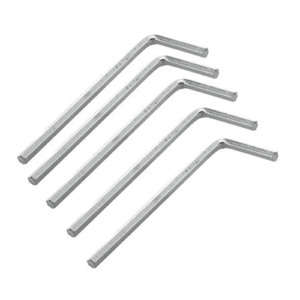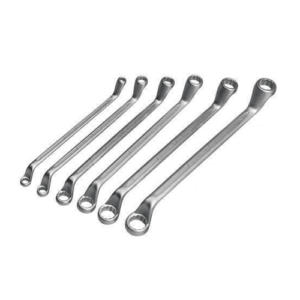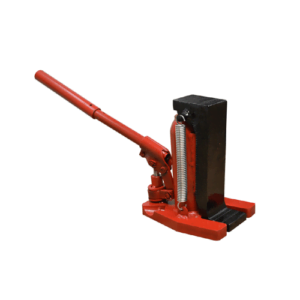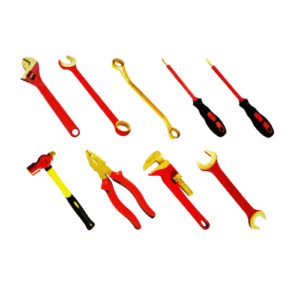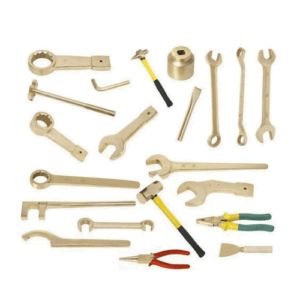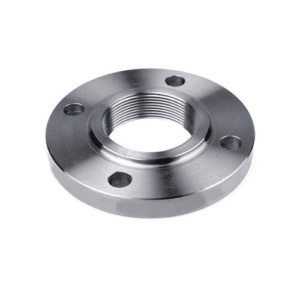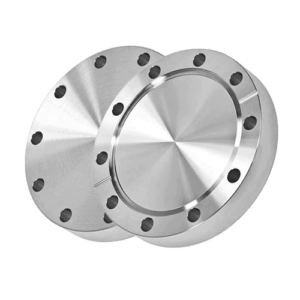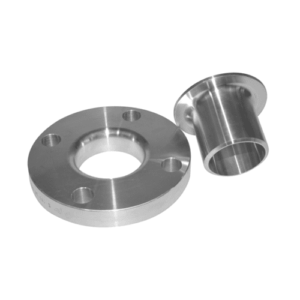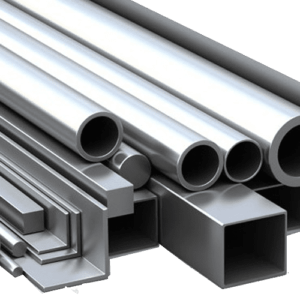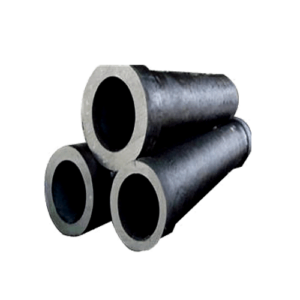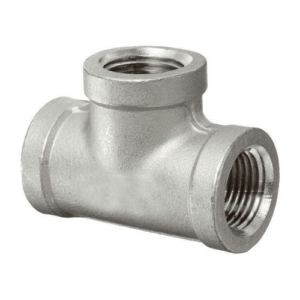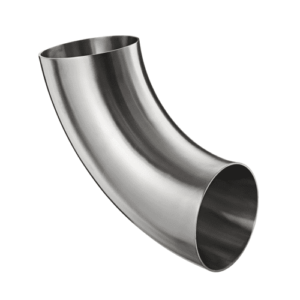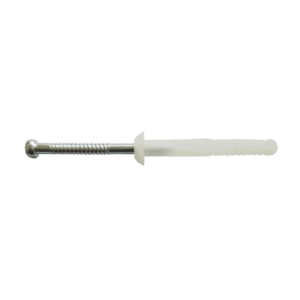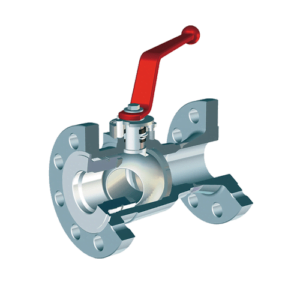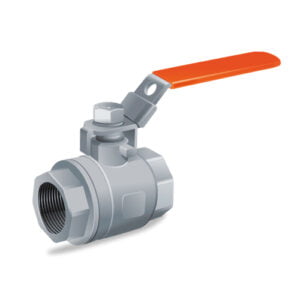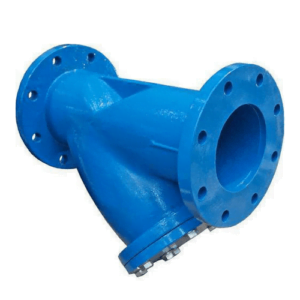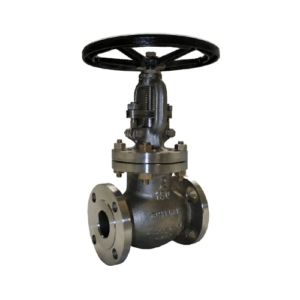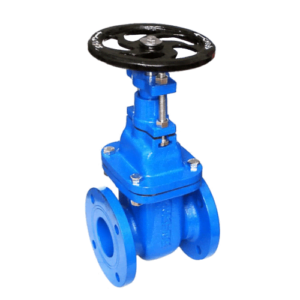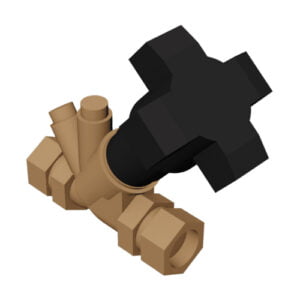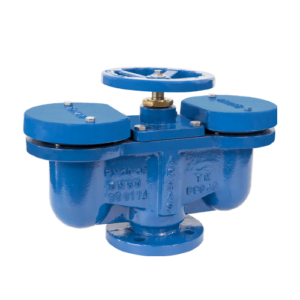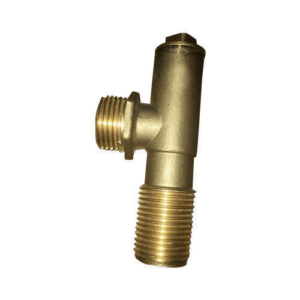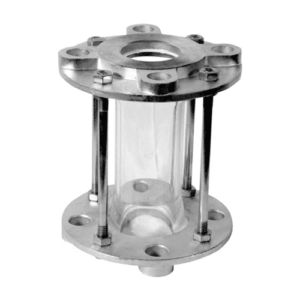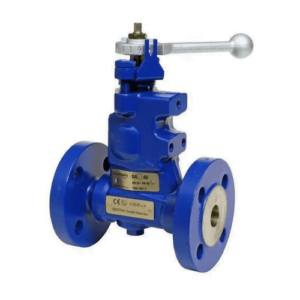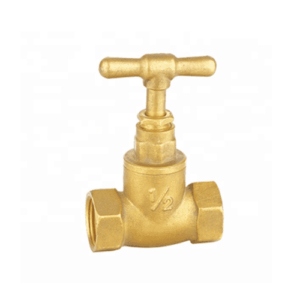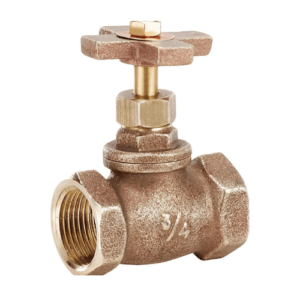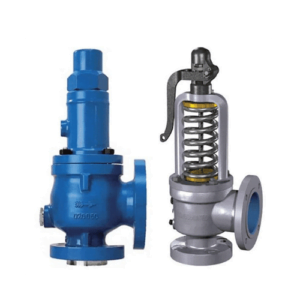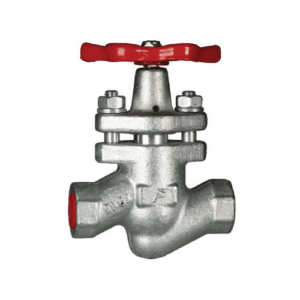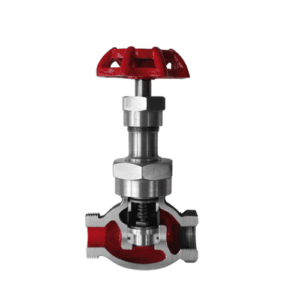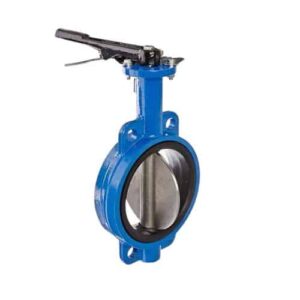Gauges
Gauges: A gauge or gage, in science and engineering, is a device used to make measurements or in order to display certain dimensional information. A wide variety of tools exist which serve such functions, ranging from simple pieces of material against which sizes can be measured to complex pieces of machinery.
Industrial Belts
Industrial Belts: Industrial belts are designed to transmit power between shafts and capable of moving at very high shaft speed. Industry has different use of industrial belts according to theirs need. These belts are round belts, v belts, flat belts, timing belt and PVC conveyor belt etc.
Motorized Actuator
Motorized Actuator: A valve actuator is the mechanism for opening and closing a valve. Manually operated valves require someone in attendance to adjust them using a direct or geared mechanism attached to the valve stem.
Full Gaskets
Full Gaskets: A gasket is a mechanical seal which fills the space between two or more mating surfaces, generally to prevent leakage from or into the joined objects while under compression. Gaskets allow for “less-than-perfect” mating surfaces on machine parts where they can fill irregularities.
Ring Gaskets
Ring Gaskets: Ring Joint Gaskets. Ring Joint Gaskets. Sara metallic Ring Joint Gaskets are suitable for high pressure and high temperature applications. The Joint Gaskets are available in R, RX, BX styles and in oval/octagonal profiles. Sara manufacturers in accordance with specific tolerances on CNC machines.
PTFE Gaskets
PTFE Gaskets: Polytetrafluoroethylene (PTFE) is a synthetic fluoropolymer of tetrafluoroethylene that has numerous applications. It is also known by the common trade name Teflon®, which is trademarked by DuPont. PTFE can be modified for use as a gasketing material with strong chemical resistance properties.
Filler Wires
Filler Wires: Welding is a fabrication or sculptural process that joins materials, usually metals or thermoplastics, by using high heat to melt the parts together and allowing them to cool causing fusion.
Welding Machines
Welding Machine: Welding is the process of joining two materials like steel, aluminum, brass, stainless steel, plastic or polymer and fusing them. Welder is the equipment used in welding. In this type of welding, a consumable electrode coated in flux is used to lay the weld. Electric current is provided by the welding power supply.
Welding Cable
Welding cable: Welding cable is designed for use in electric arc-welding machines to power an electrode, a specially designed metal rod, that conducts a charge. The charge carried by the electrode is needed to produce an electric arc, the heat source, between the electrode and the metals being welded.
Welding Hoses
Welding Hoses: Hoses are used across industries to transfer various types of fuel gases for welding and cutting. Fuel gases such as acetylene, propane, and butane utilize different types of welding hoses. A clamp helps lock the gas on the hose end of the nipple.
Electrode
Electrode: An electrode is a solid electric conductor that carries electric current into non-metallic solids, or liquids, or gases, or plasmas, or vacuums. Electrodes are typically good electric conductors, but they need not be metals.
Temperature Gauges
Temperature Gauges: A temperature gauge is a device used to indicate the temperature of an item being monitored. The display can be an analog dial, an analog range, or a digital readout.
Pressure Gauge
Pressure Gauge: Pressure measurement is the analysis of an applied force by a fluid (liquid or gas) on a surface. Pressure is typically measured in units of force per unit of surface area. Many techniques have been developed for the measurement of pressure and vacuum. Instruments used to measure and display pressure in an integral unit are called pressure meters or pressure gauges or vacuum gauges. A manometer is a good example, as it uses the surface area and weight of a column of liquid to both measure and indicate pressure. Likewise, the widely used Bourdon gauge is a mechanical device, which both measures and indicates and is probably the best-known type of gauge.
Hand Gloves
Butterfly Valve: Butterfly Valve has a similar operation like Ball Valve. It is used to block the flow of Media (like Water, Chemical etc.). Generally, user preferred butterfly valve instead of ball valve because it is economical. It is available in Minimum size of 40mm. Butterfly valve has a simple structure which is contain Body, Seal, Stem, Rubber seat (Nitrile, EPDM, Viton), Disc (Sg Iron, SS) & Lever. It is easy to use by Lever & Gear. It will also operate by Actuator. Basically, up to 150mm butterfly valve is operated by Hand Lever & Above 150mm butterfly valve is Gear Operated.
There is various type of Butterfly Valves Like: –
According to Flow of circuit
- Wafer Type Butterfly Valve
- Semi Lug Type Butterfly valve.
- Lug Type Butterfly valve.
- Double Flanged Type Butterfly valve.
- Motorized Butterfly valve.
Butterfly valve is also known as quarter-turn valves in the family of Valves. Butterfly valve has a different type of pressure rating & Different usage which depends on MOC of rubber & Disc. Butterfly valve available in SG Iron (Cast Iron), Cast Steel, SS304, SS316, Aluminum body.
Helmets
Helmets: Safety Helmets Color Code In Industry. Managers, foremen, engineers or supervisors usually wear white hats on site. Brown hats are worn by welders and other workers with high heat applications. Green often signifies a safety inspector but can also be used by new workers on the site or probationary staff.
Ear Plug
Ear Plug: An earplug is a device that is inserted in the ear canal to protect the user’s ears from loud noises, intrusion of water, foreign bodies, dust or excessive wind. Since they reduce the sound volume, earplugs are often used to help prevent hearing loss and tinnitus.
Accessories
Power Tools: A power tool is a tool that is actuated by an additional power source and mechanism other than the solely manual labor used with hand tools. The most common types of power tools use electric motors. Internal combustion engines and compressed air are also commonly used. Other power sources include steam engines, direct burning of fuels and propellants, such as in powder-actuated tools, or even natural power sources such as wind or moving water. Tools directly driven by animal power are not generally considered power tools.
Wall Chasers
Wall Chasers: A wall chaser is a specialized power tool used for cutting narrow grooves in walls, for instance when laying electrical cable. The tool is usually powered by an electric motor which drives a pair of abrasive discs like those found in an angle grinder, positioned closely together.
Grinder Machines
Grinder Machines: A grinding machine, often shortened to grinder, is one of power tools or machine tools used for grinding, it is a type of machining using an abrasive wheel as the cutting tool. Each grain of abrasive on the wheel’s surface cuts a small chip from the workpiece via shear deformation.
Breakers
Breakers: A Breakers is a powerful tool meant to break down large walls made of concrete. There are a variety of sizes and styles that you can purchase. A demolition hammer is not just meant to use on walls but can be used on any material that is thick, bulky and solid.
Drill Sleeves
Drill Sleeves: Drill sleeve. (engineering) A tapered, hollow steel shaft designed to fit the tapered shank of a cutting tool to adapt it to the drill press spindle. Drill Sleeves are used to adapt smaller mores taper shank tools to larger machine spindles. The Concentricity and taper angles are precisely controlled which allows perfect locking and concentric movement to the tool held.
Tap Sets
Tap Sets: Tapping is when you threads are cut into a hole. A die set is used to cut threads onto a cylinder (bolt). To use a tap or a die, first determine the number of threads per inch (TPI) of the part to be fixed.
Drills
Drills: The drill’s mechanism is actually quite simple: A trigger switch activates an electric motor, which in turn drives a rotating chuck. Numerous accessories can fit into in the chuck, allowing the drill to bore holes, drive screws, and sand, polish, and grind a wide variety of materials.
Hammers
Hammers: A hammer is a tool consisting of a weighted “head” fixed to a long handle that is swung to deliver an impact to a small area of an object. This can be, for example, to drive nails into wood, to shape metal (as with a forge), or to crush rock. Hammers are used for a wide range of driving, shaping, and breaking applications.
Pliers
Pliers: Pliers are a hand tool used to hold objects firmly, possibly developed from tongs used to handle hot metal in Bronze Age Europe. They are also useful for bending and compressing a wide range of materials.
Allen Keys
Allen Keys: A hex key, Allen wrench or Allen key, is a simple tool used to drive bolts and screws with hexagonal sockets in their heads. The tool is usually formed of a single piece of hexagonal rod of hard steel, with blunt ends that are meant to fit snugly into the screw’s socket, bent in an “L” shape with unequal arms.
Spanners
Spanners: A wrench or spanner is a tool used to provide grip and mechanical advantage in applying torque to turn objects—usually rotary fasteners, such as nuts and bolts—or keep them from turning. In Commonwealth English, spanner is the standard term. The most common shapes are called open-ended spanner and ring spanner.
Hydraulic & Manual Jacks
Hydraulic & Manual Jacks: Working Principle of HYDRAULIC JACK or HYDRAULIC PRESS. The hydraulic jack is a device used for lifting heavy loads by the application of much smaller force. It is based on Pascal’s law, which states that intensity of pressure is transmitted equally in all directions through a mass of fluid at rest.
Non Sparking Tools
Non Sparking Tools: Non-metals such as wood, leather and plastics can also be used to create non-sparking tools. Some common tools that are available in a non-sparking option include hammers, axes, pry bars, chisels, utility knives, mallets, pliers, screwdrivers, sockets and wrenches.
Vernier Calipers
Vernier Calipers: A Vernier scale is a visual aid to take an accurate measurement reading between two graduation markings on a linear scale by using mechanical interpolation; thereby increasing resolution and reducing measurement uncertainty by using Vernier acuity to reduce human estimation error.
RTJ Face
RTJ Face: RTJ flanges seal when tightened bolts compress the gasket between the flanges into the grooves, deforming (or “Coining”) the gasket to make Intimate Contact inside the grooves, creating a metal to metal seal. An RTJ flange may have a raised face with a ring groove machined into it.
Raised Face
Raised Face Flange: The Raised Face flange is the most common type used in process plant applications, and is easily to identify. It is referred to as a raised face because the gasket surfaces are raised above the bolting circle face
Flat Face Flange
Flat Face Flange: A flat faced flange, abbreviated as FF, is a flange that is machined flat and does not have a ridge like a raised face or ring type joint flange. The flat surface allows for the gasket to have full contact with the entire mating surface.
Blind Flange Manufacturers
Blind Flange: A blind flange is a solid flange as shown below. The purpose of these is to block off a section of pipe or a nozzle on a vessel that is not used. (A nozzle is typically a pipe coming out of a vessel and is usually flanged so it can be connected to valves or piping).
Lap Joint Flange
Induskart is a leading manufacturer specializing in lap joint flanges. With a deep understanding of industrial requirements and various applications, we provide high-quality flanges, especially tailored for the applications needing frequent inspections and cleaning. Our products, ranging from stainless steel to alloy materials, cater to diverse industries like pharmaceuticals, chemicals, water treatement, construction and oil & gas. Committed to certified excellence, expansive product range, and competitive pricing, Induskart stands as a trusted name for lap joint Flange Manufacturer in India.”
Steel Pipe
Steel Pipe: Steel pipes are found in a variety of places. Since they are strong, they are used underground for transporting water and gas throughout cities and towns. They are also employed in construction to protect electrical wires. While steel pipes are strong, they can also be lightweight.
Copper Pipe
Copper Pipe: Copper pipes are commonly used in the construction industry for water supply lines and refrigerant lines in HVAC (heating, cooling, and air-conditioning) systems. Copper pipes can be manufactured as soft or rigid copper and offer excellent corrosion-resistance and reliable connections
Cast Iron Pipe
Cast Iron Pipe: Cast iron pipe is a pipe which has had historic use as a pressure pipe for transmission of water, gas and sewage, and as a water drainage pipe during the 17th, 18th, 19th and 20th centuries.
Tee
Tee: Pipe Tee is a type of pipe fitting which is T-shaped having two outlets, at 90° to the connection to the main line. It is a short piece of pipe with a lateral outlet. Pipe Tee is used to connect pipelines with a pipe at a right angle with the line. Pipe Tees are widely used as pipe fittings.
Elbows
Elbows: An elbow is installed between two lengths of pipe (or tubing) to allow a change of direction, usually a 90° or 45° angle; 22.5° elbows are also available. The ends may be machined for butt welding, threaded (usually female), or socketed. When the ends differ in size, it is known as a reducing (or reducer) elbow.
Frame Fixing Anchors
Frame Fixing Anchors: Plastic frame fixings are the ideal solution for the fixing of facade constructions, roof substructures, heavy wall cabinets, squared timbers, cable trays, gates and doors. With the long plug shaft, these can be directly secured in the building substrate through the attachment part.
Bullet Anchors
Bullet Anchors: Bullet type anchor shell with internal thread for pre-positioned installation. When the bullet is placed in shell & hit with a setting tools it slides forward & the inside part of shell expands and takes the grip in the wall.
Nylon Anchor
Nylon Anchor: Nylon Anchors are pre-assembled through fixing, a light duty nail expanding for solid masonry and hollow wall constructions. The design of the expansion nail used in the Nylon Anchor is such that it can be removed if need be.
Sanitary Fixing Anchor
Sanitary Fixing Anchor: Nylon Anchors are pre-assembled through fixing, a light duty nail expanding for solid masonry and hollow wall constructions. The design of the expansion nail used in the Nylon Anchor is such that it can be removed if need be.
Mechanical Anchors
Mechanical Anchors from Induskart : Our mechanical anchors are designed to install easily and securely into a variety of base materials — from concrete and brick to hollow and grouted CMU. They offer optimal performance even in the most demanding structural applications. For applications where there is a risk of concrete cracking, specific anchors have been designed and tested to offer reliability under these conditions.
Ball Valve
A ball valve is a form of quarter-turn valve which uses a hollow, perforated, and pivoting ball to control flow through it. It is open when the ball’s hole is in line with the flow and closed when it is pivoted 90-degrees by the valve handle. Ball valves are durable, performing well after many cycles, and reliable, closing securely even after long periods of disuse. They are commonly used in applications ranging from residential to industrial for their robustness, ease of operation, and versatility in handling various fluids, gases, and slurries.
Strainer Valve
Valve: Valves are for starting or stopping flow, regulating or throttling flow, preventing back flow or relieving and regulating pressure in fluid or gaseous handling applications. Common valve types include: Ball, Butterfly, Check, Diaphragm, Gate, Globe, Knife Gate, Parallel Slide, Pinch, Piston, Plug, Sluice, etc.
Strainer: Y-Strainers are devices for mechanically removing unwanted solids from liquid, gas or steam lines by means of a perforated or wire mesh straining element. They are used in pipelines to protect pumps, meters, control valves, steam traps, regulators and other process equipment.
Gate Valve
Valve: Valves are for starting or stopping flow, regulating or throttling flow, preventing back flow or relieving and regulating pressure in fluid or gaseous handling applications. Common valve types include: Ball, Butterfly, Check, Diaphragm, Gate, Globe, Knife Gate, Parallel Slide, Pinch, Piston, Plug, Sluice, etc.
Gate Valve: A gate valve, also known as a sluice valve, is a valve that opens by lifting a barrier out of the path of the fluid. Gate valves require very little space along the pipe axis and hardly restrict the flow of fluid when the gate is fully opened. The gate faces can be parallel but are most commonly wedge-shaped.
Sluice Valve
Valve: Valves are for starting or stopping flow, regulating or throttling flow, preventing back flow or relieving and regulating pressure in fluid or gaseous handling applications. Common valve types include: Ball, Butterfly, Check, Diaphragm, Gate, Globe, Knife Gate, Parallel Slide, Pinch, Piston, Plug, Sluice, etc.
Sluice Valve: A gate valve, also known as a sluice valve, is a valve that opens by lifting a barrier out of the path of the fluid. Gate valves require very little space along the pipe axis and hardly restrict the flow of fluid when the gate is fully opened. The gate faces can be parallel but are most commonly wedge-shaped.
Balancing Valve
A balancing valve is used to regulate the flow of fluid in heating and cooling systems to ensure optimal efficiency and comfort. It adjusts the pressure drop across the system and provides precise flow control, helping to maintain the correct balance of water flow between different branches of the system. This type of valve is essential in HVAC applications, allowing for the accurate calibration of flow rates to meet the specific demands of different zones or equipment within a facility, leading to energy savings and improved system performance.
Air Release Valve
An air release valve is a crucial component in pipeline systems, particularly in water and wastewater pipelines, designed to automatically release trapped air and gas pockets to optimize system efficiency and prevent damage. This type of valve is essential for maintaining the flow and pressure stability within the system. Air release valves help prevent issues such as air lock, hydraulic inefficiency, and pipe bursts caused by high pressure due to trapped air. They are commonly installed at high points along a pipeline where air naturally accumulates. Their operation improves the energy efficiency of the system and reduces the risk of premature wear and tear on pipeline components.
Diaphragm Valve
A diaphragm valve is designed to control the flow of a substance through an enclosed space by the flexing of a diaphragm. It is commonly used in applications requiring precise flow regulation and sealing capabilities, particularly where the purity and cleanliness of the flow medium are essential. The valve’s design prevents any fluid from being trapped in the valve itself, making it ideal for use in the pharmaceutical, food and beverage, and biotech industries. This type of valve is also appreciated for its ability to handle corrosive fluids and slurries with relative ease.
Ferrule Cock
Ferrule Cock: Ferrule Cocks incorporate a packed gland spindle and have a union outlet for connection to all ferrule bends or adaptors. RMC TPFNR Ferrules are for under pressure tapping. They incorporate a non-return gunmetal jumper valve and a high-density polyethylene tapered closing plug.
Fire Hydrant Landing Valve
A Fire Hydrant Landing Valve, also known as a landing valve, is a crucial component in firefighting water supply systems. It provides an accessible means for the fire service to tap into the municipal water supply during emergencies. These valves are typically mounted on risers within buildings or on external fire hydrants, featuring a connection point for fire hoses. They are designed to withstand high pressures and allow for rapid deployment and control of water flow to combat fires effectively, ensuring quick and efficient response in critical situations.
Needle Valve
Needle Valve: A needle valve is a type of valve with a small port and a threaded, needle-shaped plunger. It allows precise regulation of flow, although it is generally only capable of relatively low flow rates.
Steam Trap
Steam Trap: A steam trap is a device used to discharge condensates and non-condensable gases with a negligible consumption or loss of live steam. Most steam traps are nothing more than automatic valves. They open, close or modulate automatically.
Sight Glass Valve
Sight Glass Valve: A sight glass is a transparent tube through which the operator of a tank or boiler can observe the level of liquid contained within. Simple sight glasses may be just a plastic or glass tube connected to the bottom of the tank at one end and the top of the tank at the other.
Blow Down Valve
A blowdown valve is used in boilers and pressure vessels to remove sediment and other impurities that accumulate in the bottom of the system during operation. This type of valve is essential for maintaining the efficiency and safety of the boiler by ensuring that the water quality does not degrade to a level that could cause scaling or corrosion. Blowdown valves are operated manually or automatically at set intervals to release water and accumulated solids, thereby preventing damage and maintaining the performance of the heating system. This process is crucial for prolonging the life of boilers and ensuring their safe operation.
Gas Valve
A gas valve is a critical component in managing the flow and pressure of gas in heating systems, appliances, and industrial processes. This type of valve is specifically designed to ensure safe and efficient operation when handling combustible gases such as natural gas or propane. Gas valves are equipped with safety mechanisms that shut off the gas flow automatically if the pilot light goes out or if a leak is detected, preventing potential hazards. They are commonly found in residential furnaces, gas-powered water heaters, and commercial gas stoves, playing a pivotal role in both safety and functionality.
Gauge Cock
A gauge cock is a type of valve used primarily in conjunction with water level gauges to control the flow of fluids into the gauge. This valve allows operators to isolate the gauge from the vessel or pipeline system for maintenance or replacement without disrupting system operations. Gauge cocks are crucial in applications like boiler operations, where precise water level monitoring is essential for safety and efficiency. They typically feature a simple quarter-turn operation and provide a reliable means of sealing off the gauge from high pressures and temperatures.
Fusible Plug
Fusible Plug: A fusible plug operates as a safety valve when dangerous temperatures, rather than dangerous pressures, are reached in a closed vessel. In steam engines the fusible plug is screwed into the crown sheet (the top plate) of the firebox, typically extending about an inch (25mm) into the water space above it.
Stop Valve
Stop Valve: Stop valve is any sort of valve type that completely stops the flow of liquid flow through a pipe. Stop valves is mainly used in plumbing or industrial applications to shut off the flow of (hot or cold) water to a plumbing fixture, such as an icemaker, toilet, faucet, dishwasher etc.
Relief Valve
Relief Valve: A relief valve or pressure relief valve is a type of safety valve used to control or limit the pressure in a system; pressure might otherwise build up and create a process upset, instrument or equipment failure, or fire.
Pressure Reducing Valve
Pressure Reducing Valve: A relief valve or pressure relief valve is a type of safety valve used to control or limit the pressure in a system; pressure might otherwise build up and create a process upset, instrument or equipment failure, or fire.
Piston Valve
Piston Valve: A piston valve is a device used to control the motion of a fluid along a tube or pipe by means of the linear motion of a piston within a chamber or cylinder. Examples of piston valves are: The valves used in many brass instruments. The valves used in pneumatic cannons.
Butterfly Valve
Butterfly valves are very similar to ball valves they also work on the phenomenon of quarter-turn rotational movement which means by moving 90 degrees it could be either turned on to fully operated or turned off to restrict the flow of fluid. This is used to transfer, regulate or stop the movement of a fluid. They are used widely in the industries such as food processing, water supply industries, water pumping, etc. they are used wherein there is a need for a broad range of flow isolation Is required. “They belong from the quarter-turn family” and they usually have large pipe diameter.

